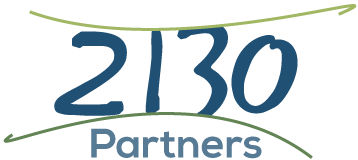 In mid-December we wrote one of our year end, “get ready for next year” blog posts called, “It's 2012 - Make It Happen!” Now that we are moving in to the second half of the year we are wondering - how’s that working for you?
In mid-December we wrote one of our year end, “get ready for next year” blog posts called, “It's 2012 - Make It Happen!” Now that we are moving in to the second half of the year we are wondering - how’s that working for you?
Traditionally at the end of the year the majority of our clients and friends are working on “what’s next.” The effort ranges from New Year’s resolutions, to budgets, to creating an entirely new vision and, (hopefully), strategy to go with it. Often somewhere in the first quarter, (if not actually in January), these “best of intentions” fall to the wayside. As the economy continues to be challenging and the levels of stress seem to be in an unprecedented range we thought now would be a good time to “look up and out” and revisit the idea of a bold vision in 2012.
Most of the time, when we talk about “bold vision” we find these efforts produce plans based on past experience, rather than launching a truly bold vision. So to clarify what we mean, we say vision has more to do with a dream for the future than what’s happened in the past. This is a really critical point. When teams go to create a vision they really think they are working on the future, but this “predictions based on the past” almost always dominates the conversation and people aren’t even aware of it. (Next time you are in a high level strategy session or meeting about vision, see if you can detect what we are pointing to here. If you need more clarity, we talk a lot about the differences in our book, Accelerate, in the section on Leadership Choice Point.)
In the book we also emphasize that most ”leadership” activity is based on looking backwards, reviewing results to-date, and building a plan forwards from that past. There is nothing wrong with this. As human beings our minds and memories are constructed to have a “database” that builds on past experience. If we didn’t have a “cumulative learning ability” we would be helpless. Every moment would be new. We wouldn’t be able to find home at night, wouldn’t recognize it when we got there, and strangers would occupy it if we couldn’t draw effectively from our past experience. That’s the good news part.
The bad news part is that past-based predictions also keep us enslaved to what’s stored in our mental database, (or what we fondly call “the mental File Cabinet.”) It keeps our attention on our limitations. For example, we know the story of a head-hunter who was working on a placement. He had spoken with a potential candidate and told him, “I can’t present you for this CEO job, for which you are an excellent candidate, because you don’t have a chemistry degree.” The last CEO of the particular company had failed. He had a chemistry degree and the Board of Directors insisted on the new candidates having one also. So it’s an interesting issue. In this example, if a chemistry degree could predict and determine success, why did the previous guy fail? Why does it make it a given that this other outstanding candidate would fail because he doesn’t have one? Somewhere in the past, this notion became a “predictor of success” and even in the face of evidence to the contrary, it’s still being pursued. (This is why we used the strong language “enslaved” in the first sentence of this paragraph.)
It gets worse when we are in this predictive state and also creating and executing on a vision. Check your own thoughts here and see how often you can be truly creative and go for something that is not a projection of the current path of your life, your resume, your finances, your job…you see where this is going. Borrowing from the article I will cite below, we could call this “remembering the future.”
The Wall Street Journal Weekend Edition on 12-12-10 included an article, “Why The Mind Sees the Future in the Past Tense,” by Matt Ridley in which the author points out that recent neuroscience studies show the same parts of the mind hold our episodic memories and our imagined futures. Given the evidence here, it’s no wonder the “predictable” dominates our thinking.
What excited me about the article were the studies that show that, “the more unexpected something is, the more conscious we are of it.” Your brain has to work harder when what shows up doesn’t match prediction, or expectation. What this means to me is that the most highly leveraged way to get yourself and your team in to powerful action is to start throwing new stuff in front of your collective brains. Create a BOLD vision that you can’t prove based on the past. You will be stimulated, more conscious, and therefore more present. You will be unleashing creativity instead of invoking your past experience, circumstances, knowledge, (or lack of it), and limitations.
I am not being “Pollyanna” or encouraging “woo-woo” here. Once your new bold vision, or as we call it, “Yonder Star” is created, it’s time to be responsible for the past. It’s time to get very clear about your situation – “the way that it is and the way that it isn’t.” If you start looking from the perspective of your Yonder Star as if it is already fulfilled, your mind will start discovering what it did to get there. It will get very excited about remembering.
In his blog post, “Strategy Slam’”, a long-time colleague, Russ Phillips, recommends going to Denny’s by yourself with a pen and pad to do your creative thinking. I am much more creative in dialogue with other committed players. Many people wait for adversity to set in, and it will, sooner or later, to force themselves and their associates to get creative…”sort of a create or die strategy.” There are lots of ways to “get yourself there.” What gets you in action for a bold inquiry? What’s your most creative environment? What calls forth your commitment? What stops you? These may be the most powerful questions you can ask yourself as you revisit, resurrect, or invent for the first time your bold vision for 2012!


 As we discuss comfort zones, set points, etc. we want to be clear that this is not a piece about people who plod along and move slowly or people who seem risk averse. If you are a fast-paced, “go go go” type of person that is your comfort zone. What if you had to slow down, be more reflective, bring your energy “down and in” instead of being an “up and out” kind of person? What if you had to take on a meditation practice? Would you still be in your comfort zone? What if you are a thrill seeker and look for ways to “push the envelope” all the time? What would happen if you lived a more mundane existence and had to experience the ordinary? Would you still be in your comfort zone?
As we discuss comfort zones, set points, etc. we want to be clear that this is not a piece about people who plod along and move slowly or people who seem risk averse. If you are a fast-paced, “go go go” type of person that is your comfort zone. What if you had to slow down, be more reflective, bring your energy “down and in” instead of being an “up and out” kind of person? What if you had to take on a meditation practice? Would you still be in your comfort zone? What if you are a thrill seeker and look for ways to “push the envelope” all the time? What would happen if you lived a more mundane existence and had to experience the ordinary? Would you still be in your comfort zone?